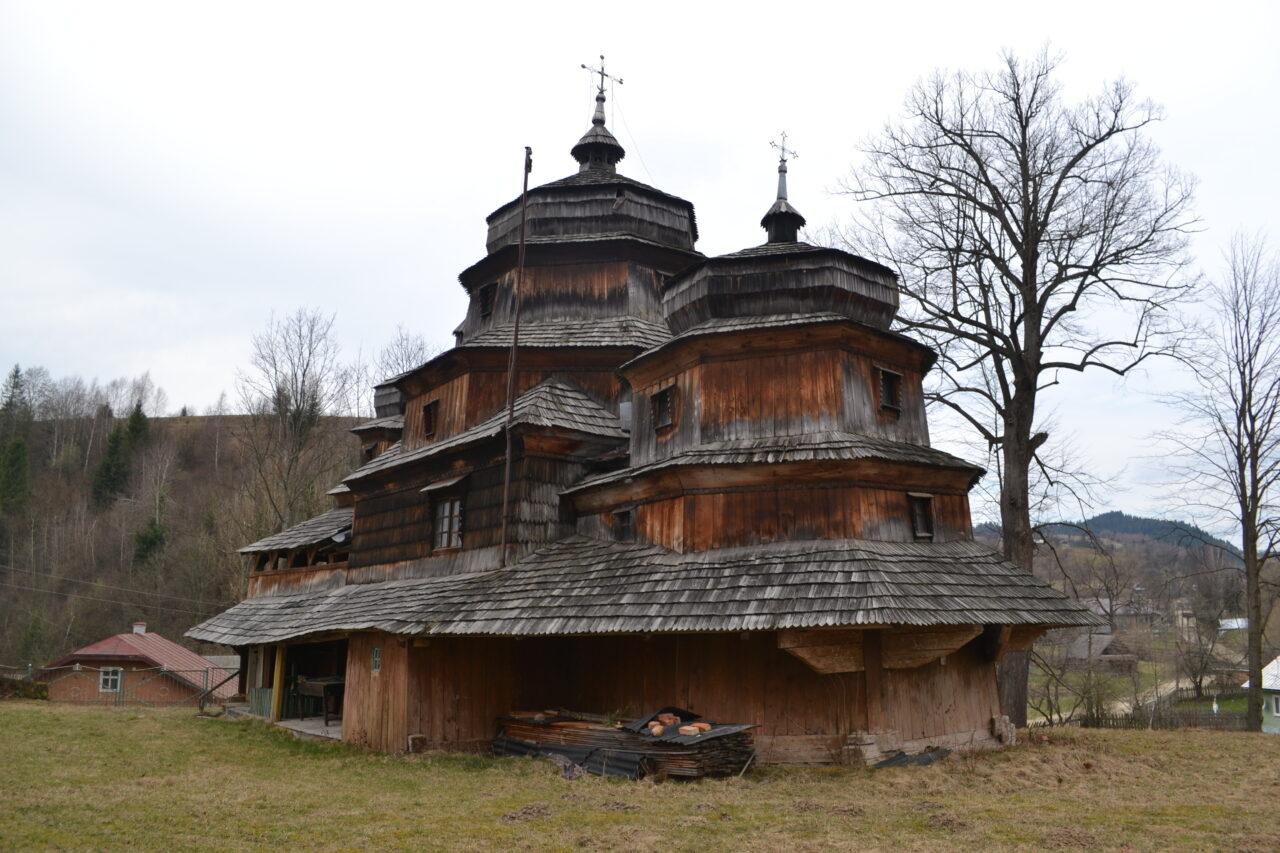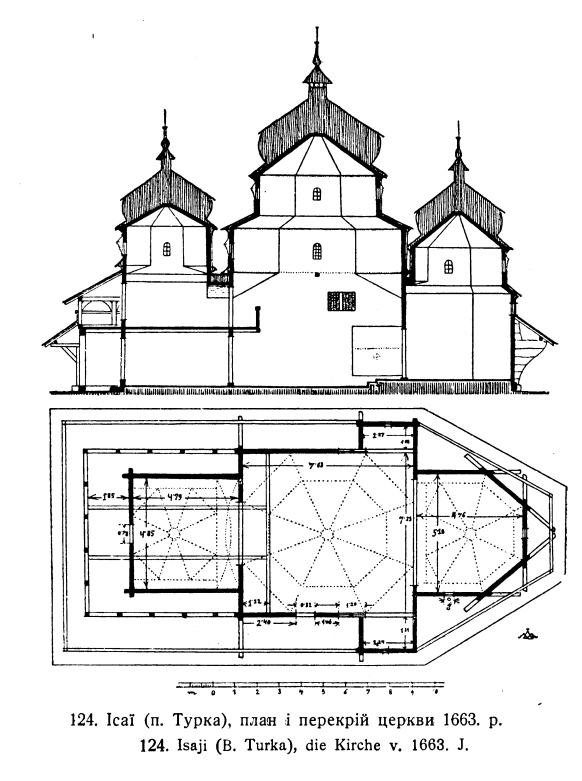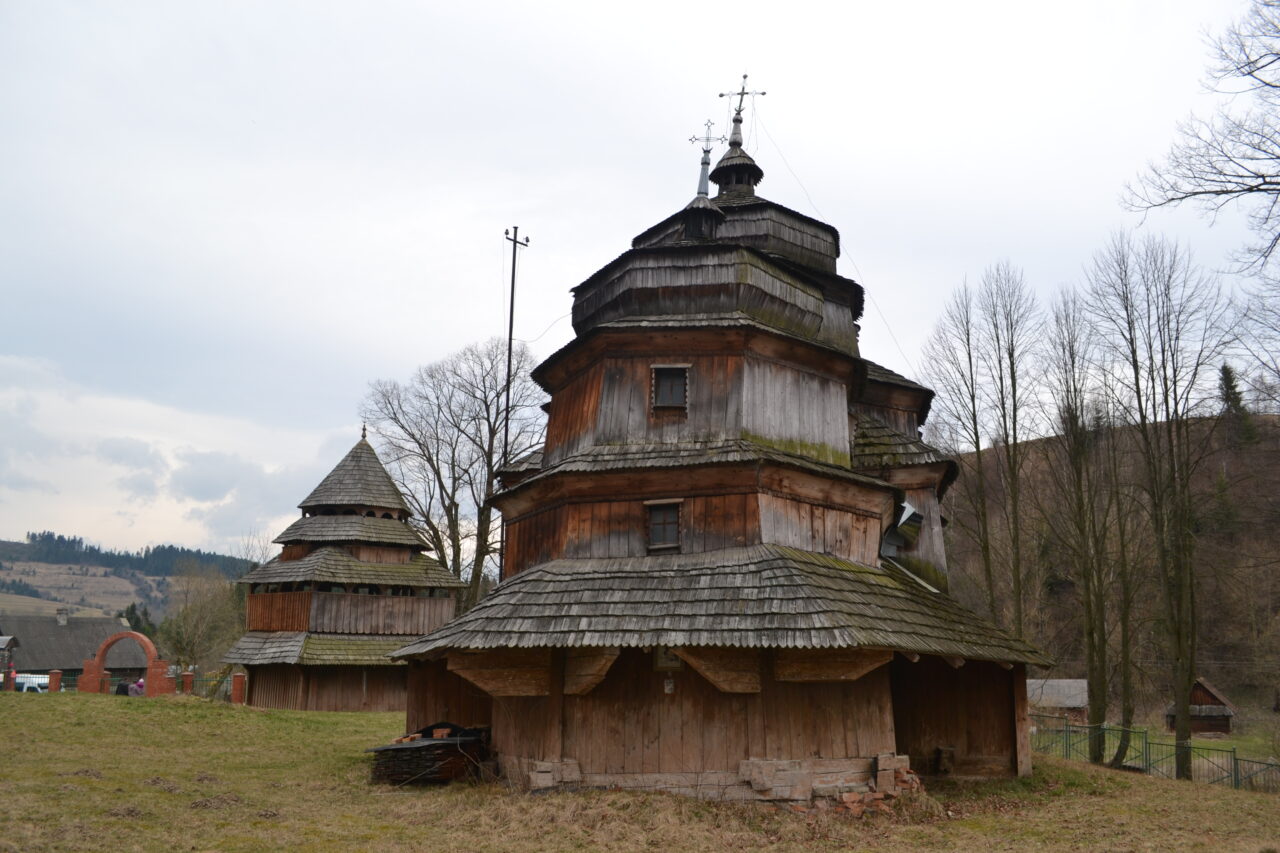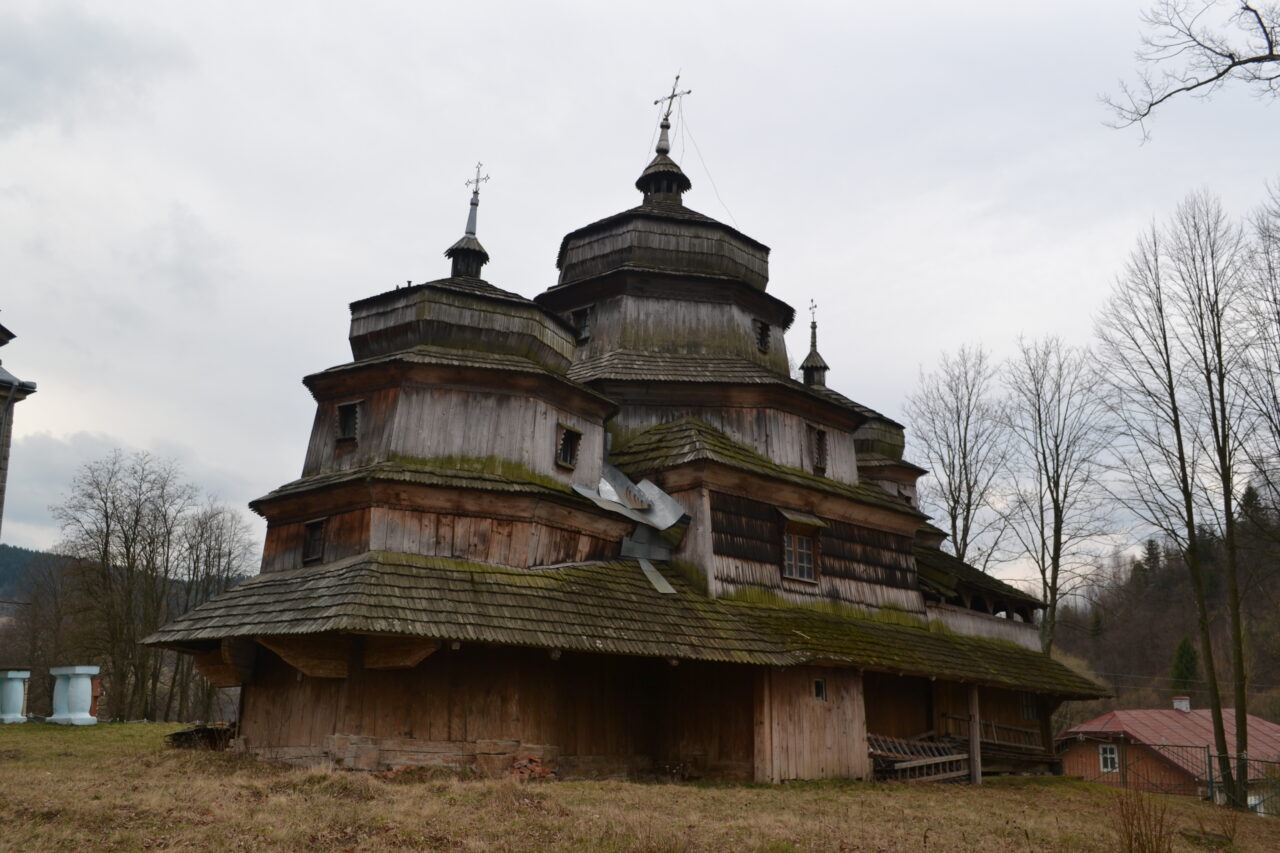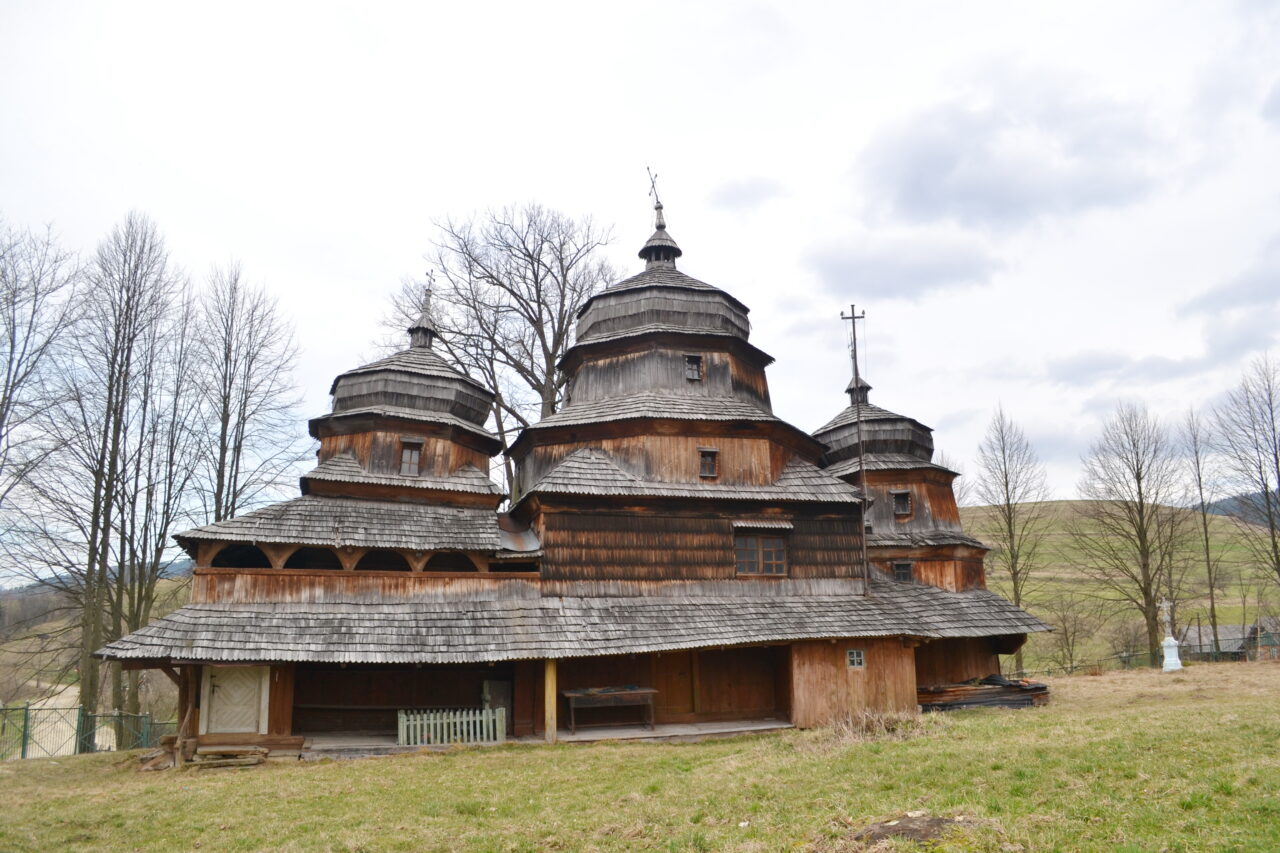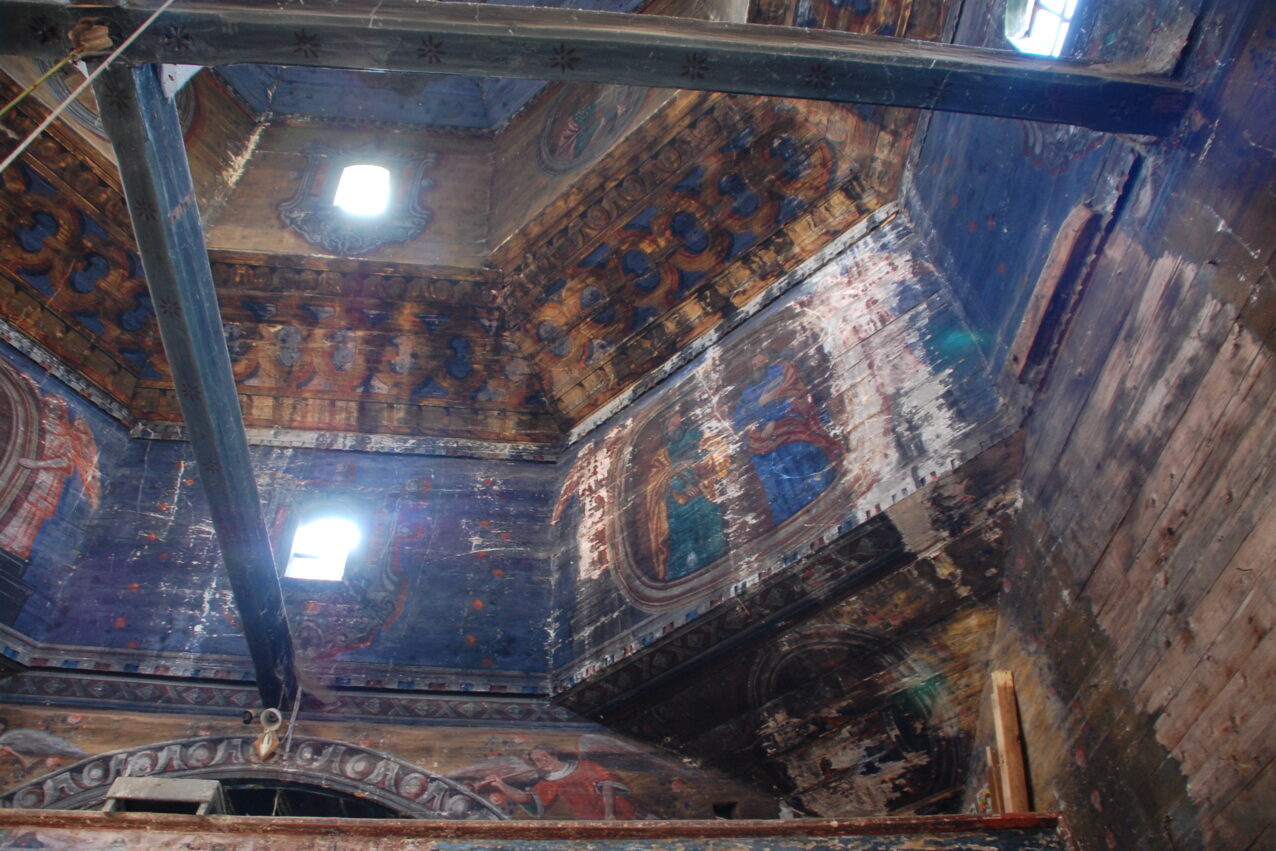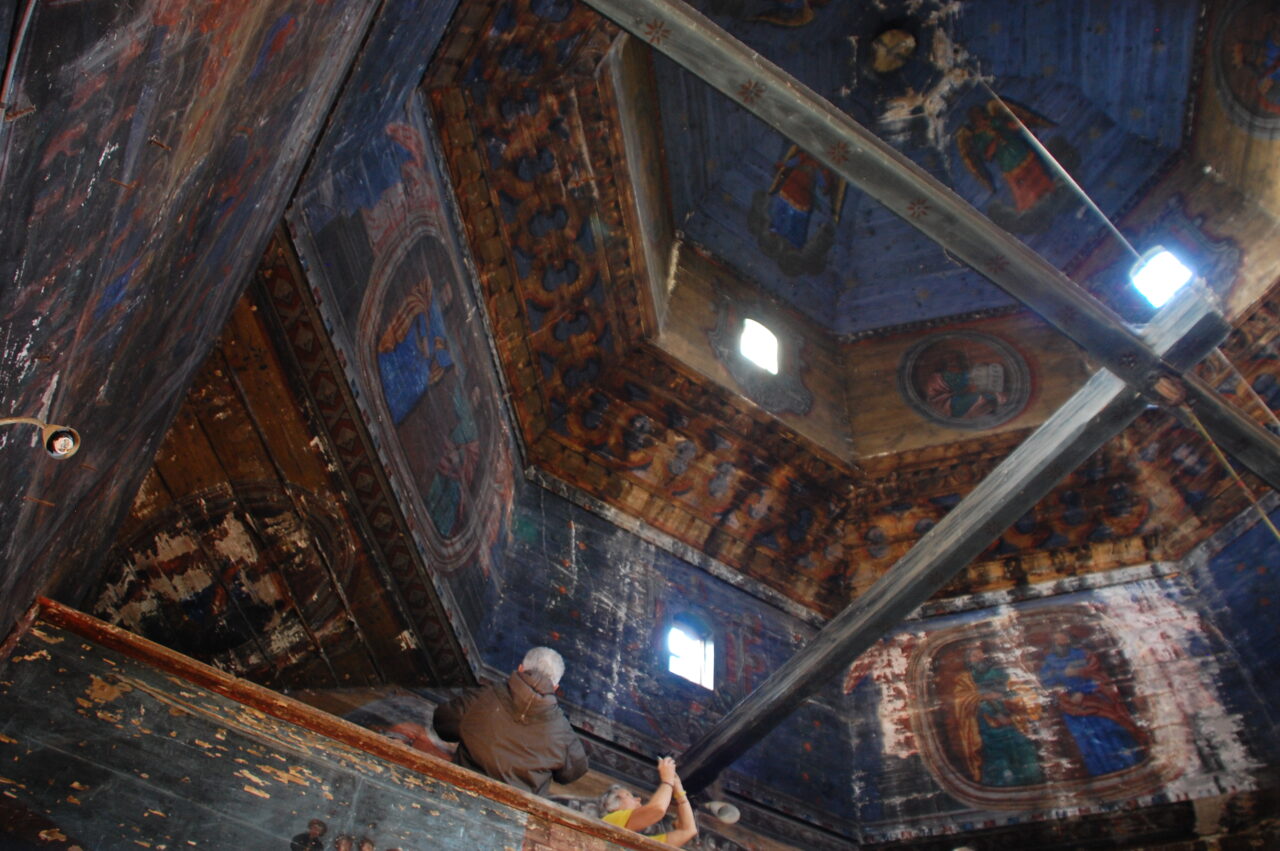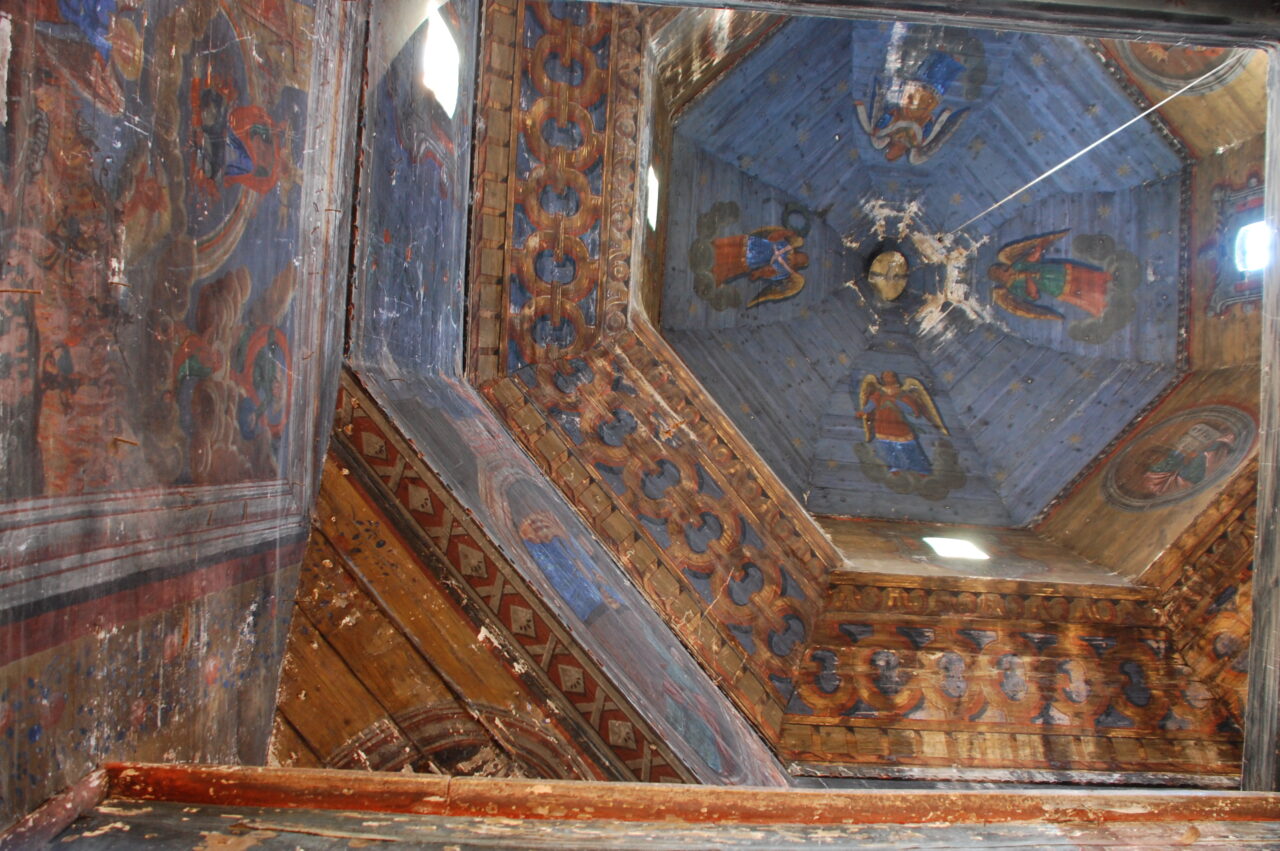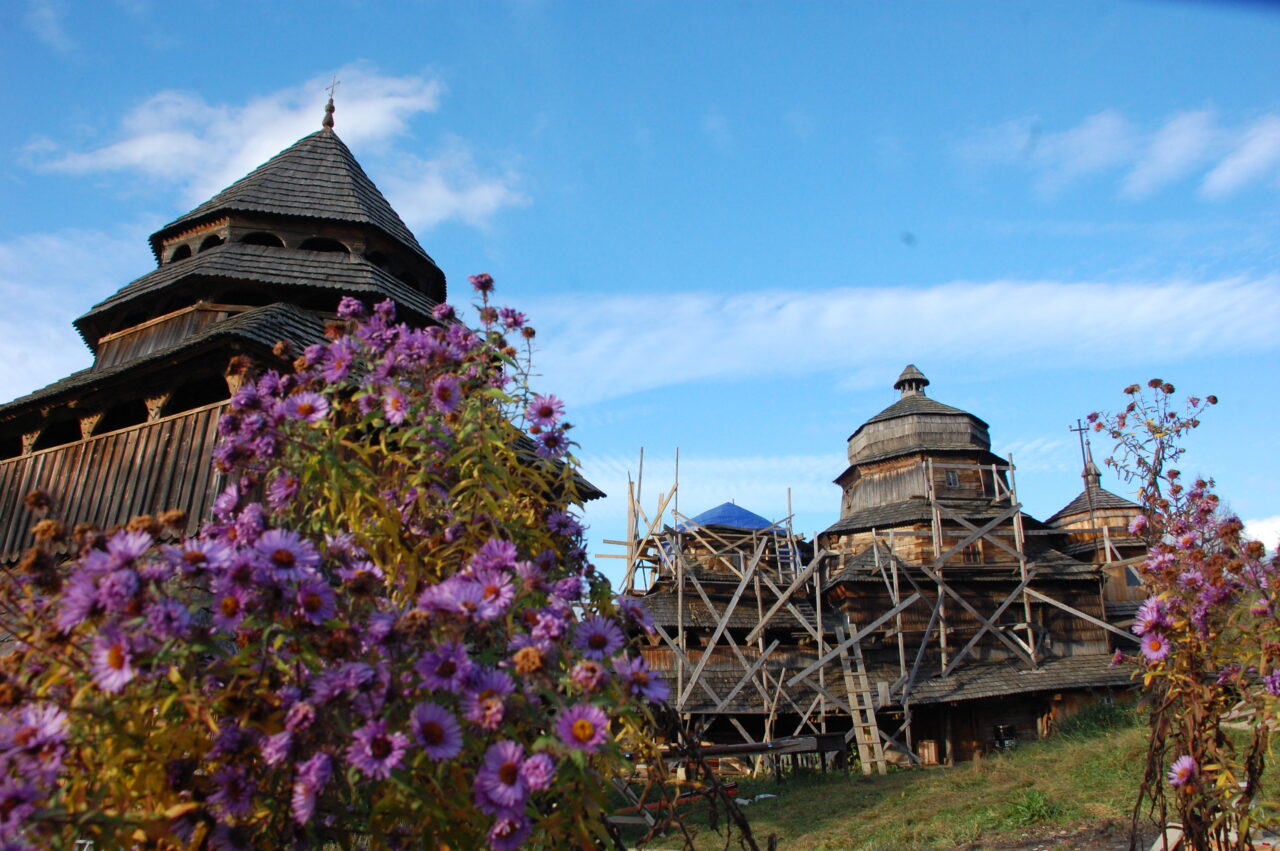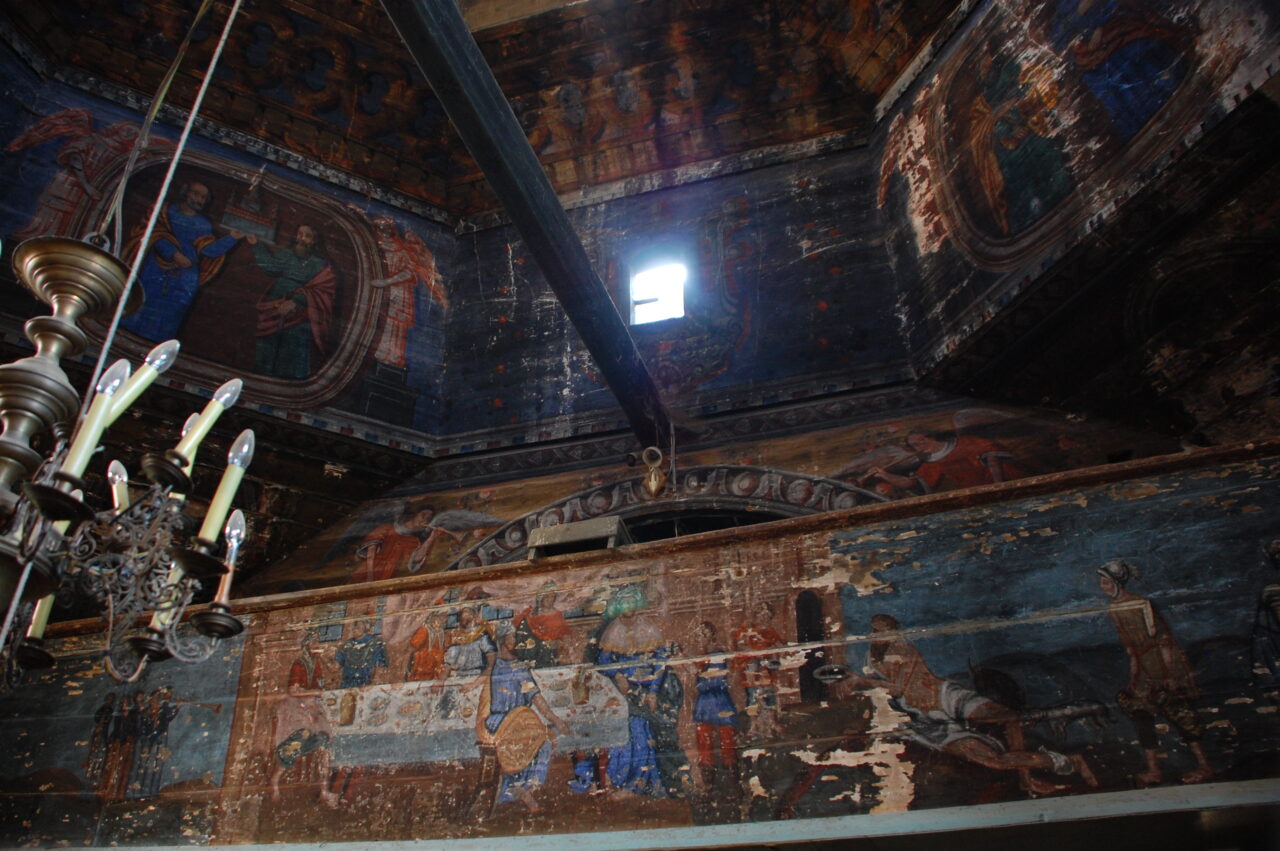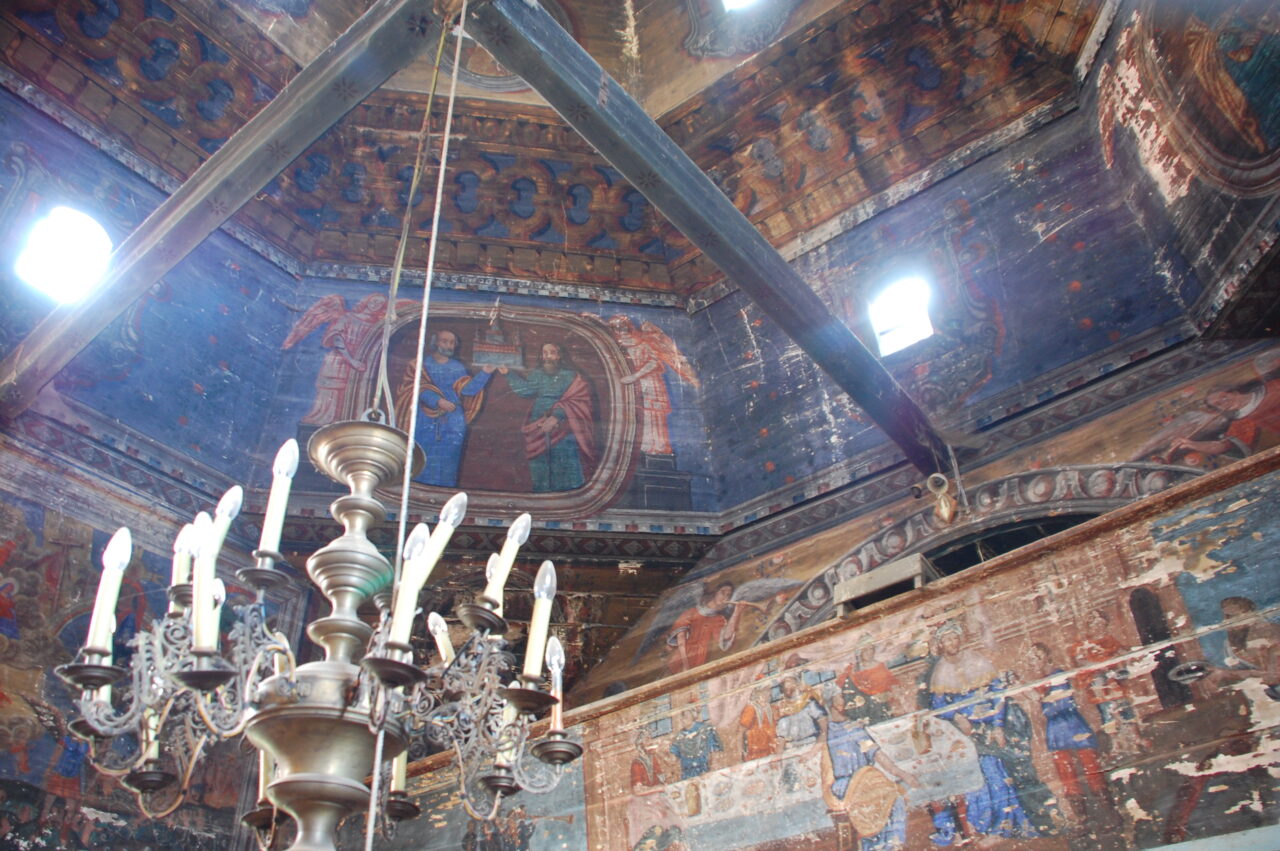The Church of St. Archangel Michael in the Isaii village in Turka district is an architectural monument of national importance, but, unfortunately, it is little known among people. And this is a real pearl that hid in the Skole Beskids! This is a masterpiece of sacred architecture, built by masters in the traditional Boiko Style!
Turka district is located in the High Beskides, in the upper reaches of the Dniester and Sian. A separate ethnographic group of the Ukrainian people – Boiky – was formed here. For them, in addition to household elements of material and spiritual culture sacred buildings were defining. A characteristic type of wooden churches was created in Boiky region, the architectural plasticity and three-dimensional solution of which became masterpieces of Ukrainian sacred construction. The nature of the native land was a model and inspiration for the masters. That’s why Boiko churches impress with their high peaks with many bends, which really resemble a slender fir tree and the Carpathian Mountains themselves. Such a beauty stands on a hill in the center of the village. It is one of the oldest wooden churches in the Lviv region. An inscription on the doorpost has been preserved with the date – 1663, and the master who built this temple left his name – Ilia Pantelymon (which is an extremely rare case, he must have been proud of his work). The church belongs to the Boiko type churches – three-part and three-story, but has a number of features. There were different schools of sacred architecture and the Church of St. Michael the Archangel belongs to a rare type – Drohobych architecture school that had its own features: three monumental onion-shaped domes, an additional church-emporium under the dome above the babynets (narthex) and a long gallery on the columns. In addition, the building is one of the few examples of a church with a choir (a dais for singers). All the three volumes of the church end with octagonal tops, crowned with domes with small roof lanterns and tops with crosses. The church is surrounded by a wide attic, supported by carved columns. The ornate portal contains a number of horizontal patterns, and side doorposts, decorated with geometric patterns, resemble woven or embroidered stripes on towels. Here, as in many Galician churches of the 17th century, constructive struts and columns were used, and the two-story gallery-arcade is an integral architectural and decorative bulk. The church is covered with shingles. The ensemble is complemented by a four-tiered bell tower with arched galleries on the upper tiers. It was built in 1772 and previously served as the entrance to the temple, i.e. was the gateway.
It is the only wooden church in Turka region that has preserved its original beauty not only in terms of architecture, but also in terms of decoration. A four-tiered baroque carved gilded iconostasis, which is the same age as the church, has been preserved here. Perhaps the reason for this preservation was the fact, that at the beginning of the 20th century at the times of the Austro-Hungarian Empire, a Cluster of conservators was established in Lviv under the leadership of the Central Commission for the Protection of Monuments in Vienna, which took an interest in wooden churches in Turka region. So it was the Cluster of conservators, who gave the permission to build a new church in the Isaii village, provided the old monument is preserved. Thus, now there are two temples under one name on the hill next to each other, one is in acting and the other as an architectural monument. The new stone church was built in the interwar period according to Yevhen Nahirnyi’s project in neo-Byzantine style.
The villagers are proud of their monument; consider it unique, which is easy to notice. You just need to have a look at the Isaii village coat of arms: there is the temple on the green hills, which symbolize the Carpathians. According to the experts, the first churches in this area appear almost simultaneously with the founding of the villages. Another confirmation that the Isaii village and the temple are indivisibly connected is the name of the village itself, which comes from the priest Isaiah Dudzynskyi’s name. He is also mentioned as a healer who was able not only to heal people, but also to predict their fate. This attracted people from other places and the village grew. In the middle of the 18th century there already were 700 yards, 10 water mills and 7 small churches – one in each country. At the turn of 18th-19th centuries most of the villagers died of a terrible plague. Now there live about one thousand people who preserve the ancient traditions of mountaineers-Boiky.
If you want to see a unique church, immerse yourself into a real mountain village life, breathe the coniferous air and admire the Red Book plants, the Isaii village will be happy to meet you.

